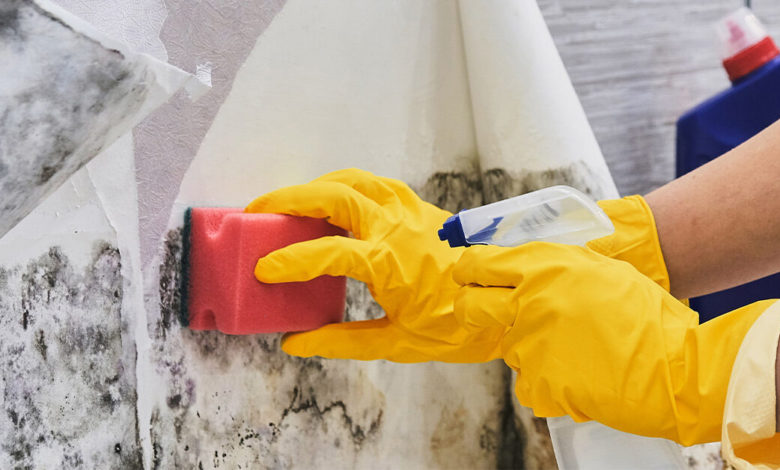Health Risks Associated with Mold Infestation



If you suspect there’s mold in your home or office, it is essential to take action quickly before the problem gets worse. Mold spores often trigger allergic reactions, breathing issues, and other adverse health effects in humans.
Mold is a type of fungi that grows in damp or moist places and can cause adverse effects on human health. Health risks associated with a mold infestation can include respiratory issues, asthma attacks, skin irritations, sneezing and coughing, eye irritation, and even more serious long-term health effects.
Individuals who are at most risks for these ailments are young children, elderly citizens, pregnant women, and those who already suffer from asthma or allergies. If mold levels rise in the environment action should be taken quickly by cleaning the afflicted surface as well as improving ventilation where possible. It is important to monitor any telltale signs of mold growth such as discoloration on walls or musty smells in order to take early preventative measures.
It can also lead to more serious respiratory diseases like pneumonia or bronchitis. Inhaling mold spores may cause irritation of the throat and lungs leading to coughing, wheezing, and shortness of breath. People who already have allergies or asthma are more likely to experience such effects from mold exposure.
Indoor mold growth can often be detected by its musty smell, yellow or black spots on walls and ceilings, and a visible discoloration of furniture. Additionally, some people may experience allergic reactions when they come into contact with mold spores. To properly address a potential mold infestation, you should take steps to both eliminate any existing moisture sources in your home and remove affected areas. If necessary, consider bringing in professional help to inspect for hidden signs of continued growth. By taking swift action to correct issues associated with a mold infestation, you can protect both yourself and your family from the numerous health risks associated with this type of indoor contamination.
What are some tips for preventing mold from growing in your home in the first place?
Prevention is key when it comes to mold in the home. Taking a few simple steps can help avoid an infestation altogether.
Start by focusing on ventilation and moisture levels – mold thrives in warm, wet environments. Be sure floors, walls, and other surfaces are regularly cleaned with an anti-fungal cleaner to inhibit its growth. Additionally pay close attention to areas like bathrooms and kitchens, where pipe leaks or faucets flooding can occur – these places should be checked regularly for signs of water damage.
Use a dehumidifier in any rooms prone to high humidity if necessary. Though prevention is preferable, if you already find yourself dealing with a mold infestation then take steps such as increasing ventilation and clearing away furniture or objects that may be collecting more humidity than usual as soon as possible. It’s important to also to contact duct cleaning service or specialist to ensure the issue is properly addressed.
What are some steps to take if you already have a mold infestation in your home?
If you have discovered a mold infestation in your home, it is important to act quickly to contain and remediate the affected area. Identify the source of the moisture which is likely the cause of the outbreak, such as a leaky pipe or roof. Repairing or replacing moisture-laden materials must be done before treating the area with an anti-fungal solution.
Once the remedy has been applied, keep air circulating by turning on fans and opening windows while taking precautionary measures to limit contact with potentially toxic mold particles. Having an expert inspect and assess the situation is key as they are best equipped to offer advice on eliminating the outbreak before it spreads.
Are there any long-term health risks associated with mold exposure, and if so, what can be done to mitigate them?
Mold exposure has long been a subject of concern among health professionals as it can have serious, long-term effects on human health if not treated in time. Inhalation or ingestion of mold spores can lead to respiratory issues and infections, as well as other medical concerns such as allergies, asthma, and neurological problems. It is therefore important to take the necessary steps to mitigate the risk factors associated with mold growth.
This includes identifying any existing sources of moisture that could be fueling the growth and effectively treating any current buildup of mold. Proper ventilation and thorough cleaning can also help eliminate existing mold and ensure that future growth does not occur. Ultimately, taking the necessary precautions to identify and prevent long-term health risks associated with mold exposure is essential for leading a healthy life.
Can children and pets safely be around mold, or are there any special precautions that need to be taken?
With mold growing in all kinds of places, it is important to consider the safety of children and pets around it. Even though mold can be a beneficial part of nature, it can also cause health risks such as allergic reactions and respiratory problems, making it especially concerning in the presence of children or animals.
The best way to ensure that both kids and animals remain safe is to take preventive measures. This includes insulating any environments where there could be extra moisture, closing vents or windows that could let in more water, utilizing dehumidifiers in the area, and cleaning any visible mold with protective equipment like gloves and a face mask.
If you believe there are still major issues present, calling professionals for analysis is always recommended. Taking these necessary precautions will help create a safe environment for everyone concerned.


